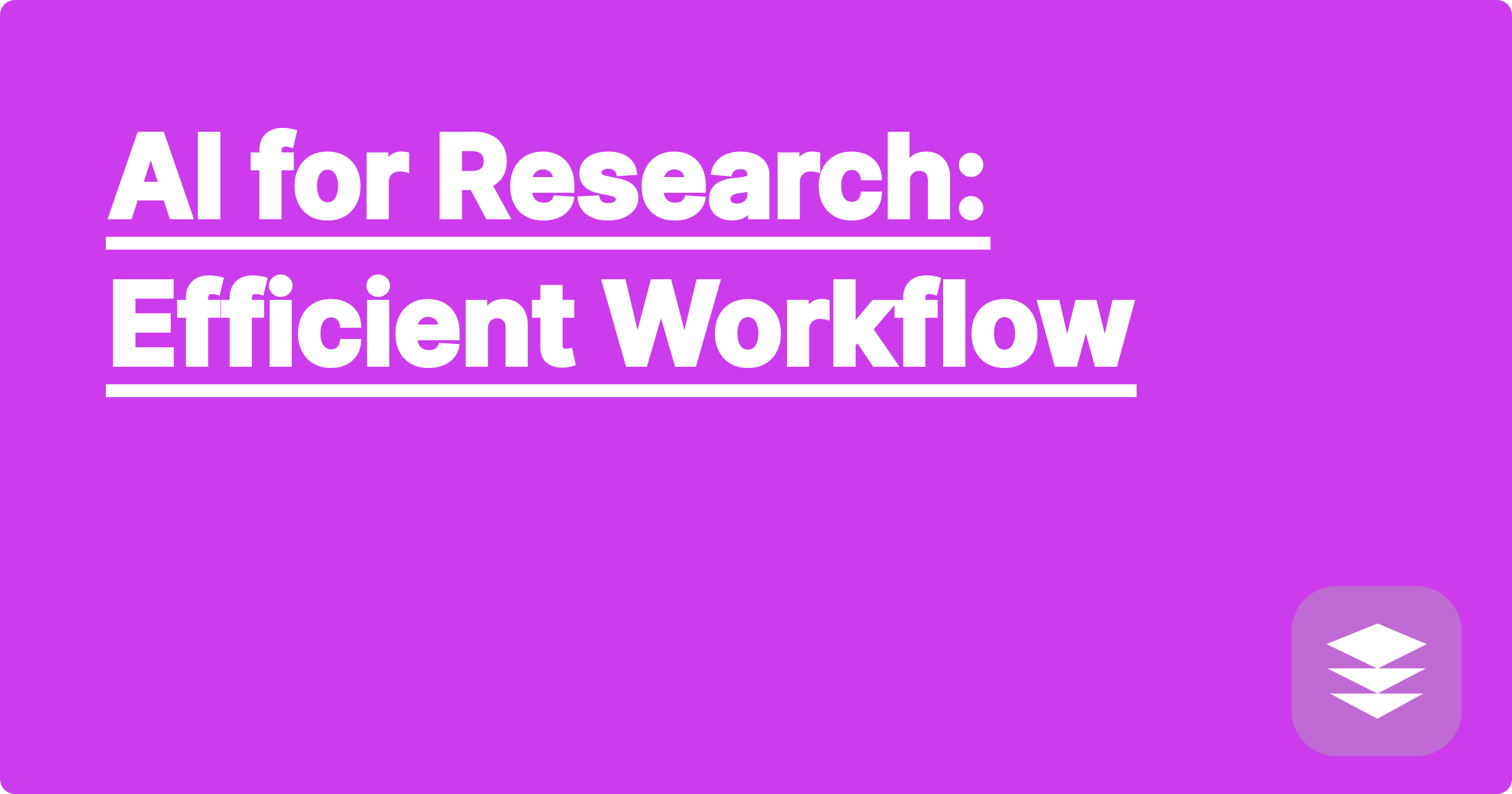
The ever-increasing complexity of STEM research presents a significant challenge for students and researchers alike. From designing intricate experiments to analyzing massive datasets, the traditional research workflow can be time-consuming and resource-intensive. Fortunately, the rise of artificial intelligence (AI) offers a powerful solution, providing tools to streamline the entire research process and unlock new levels of efficiency. By leveraging AI, researchers can optimize experimental designs, automate data analysis, and accelerate the pace of discovery.
For STEM students and researchers, mastering AI-powered research tools is no longer optional; it's essential for staying competitive in today's fast-paced scientific landscape. These tools can significantly reduce the time spent on tedious tasks, allowing researchers to focus on the more creative and intellectually stimulating aspects of their work. This blog post delves into the exciting world of AI-powered research design optimization, focusing on how AI can revolutionize experimental design and simulation optimization, particularly through the use of Design of Experiments (DOE) and Generative Pre-trained AI (GPAI) tools.
Traditional research design, particularly in fields like engineering and materials science, often relies on trial-and-error or intuition-based approaches. This can lead to inefficient experimentation, requiring numerous iterations to identify optimal parameters. Furthermore, analyzing large datasets generated by complex simulations can be overwhelming, hindering the ability to extract meaningful insights. Consider the challenge of optimizing the performance of a new material. Researchers might need to explore a vast parameter space, including composition, temperature, and pressure, to identify the ideal combination for desired properties. Without a systematic approach, this process can be incredibly time-consuming and costly.
AI offers a powerful solution to these challenges by providing tools for automating and optimizing various stages of the research workflow. AI algorithms can efficiently explore complex parameter spaces, identify optimal experimental designs, and analyze large datasets to extract meaningful insights. For instance, Generative Pre-trained AI (GPAI) models can be used to predict material properties based on existing data, significantly reducing the need for extensive experimentation. Tools like ChatGPT and Wolfram Alpha can also be invaluable for literature reviews, hypothesis generation, and even drafting research proposals. By integrating these AI tools into their workflows, researchers can significantly enhance their efficiency and accelerate the pace of discovery.
Integrating AI into your research workflow starts with clearly defining your research question and objectives. Once you have a well-defined problem, you can begin exploring relevant AI tools. For experimental design optimization, consider using DOE software integrated with AI capabilities. These tools can automatically generate optimal experimental designs, minimizing the number of experiments required while maximizing information gain. Next, prepare your data for analysis. This might involve cleaning and pre-processing data from simulations or experiments. Then, select an appropriate AI model or algorithm for your specific task. GPAI models are particularly useful for predictive modeling and optimization. Train the model using your prepared data and evaluate its performance. Finally, use the trained model to generate predictions, optimize parameters, or extract insights from your data. Remember to validate your results and iterate as needed to refine your approach.
Consider a research project aiming to optimize the design of a wind turbine blade. Using traditional methods, this would involve numerous physical prototypes and wind tunnel tests. However, by leveraging AI-powered Computational Fluid Dynamics (CFD) simulations, researchers can explore a vast design space virtually, significantly reducing the need for expensive physical prototypes. GPAI models can further enhance this process by predicting blade performance based on design parameters, allowing for rapid optimization. Another example involves drug discovery, where AI can be used to predict the efficacy of drug candidates based on their molecular structure, accelerating the identification of promising leads. A student researching the optimal conditions for growing a specific type of algae could leverage AI to design experiments exploring light intensity, nutrient levels, and temperature, potentially identifying the ideal growth conditions much faster than through traditional trial-and-error.
To effectively utilize AI in your research, focus on developing a strong understanding of the underlying principles and limitations of the tools you are using. Blindly applying AI without critical evaluation can lead to misleading results. Start with simpler AI tools and gradually progress to more complex models as your expertise grows. Collaborate with other researchers experienced in AI to learn best practices and avoid common pitfalls. Explore online resources and tutorials to stay updated on the latest advancements in AI for research. Don't hesitate to experiment with different AI tools and approaches to find what works best for your specific research needs. Document your AI-driven workflow meticulously to ensure reproducibility and transparency.
Concluding, incorporating AI into your research workflow offers a powerful way to enhance efficiency, accelerate discovery, and gain a competitive edge in the world of STEM research. By embracing these powerful tools and developing a strong understanding of their capabilities and limitations, you can unlock new levels of productivity and innovation in your research endeavors. Start exploring the world of AI for research today and witness the transformative impact it can have on your work. What are your thoughts on using AI in research? Share your experiences and questions in the comments below!
AI for STEM Exams: Ace Your Tests!
AI-Powered Lab Data: Analyze Faster!
STEM Research: AI Study Boost!
AI-Powered DOE: Optimize Your Experiments
AI Simulation: Faster, Better Results
AI in Research: Design Smarter Studies
Ace STEM Exams: AI-Powered Prep
Mastering STEM: AI Study Guide